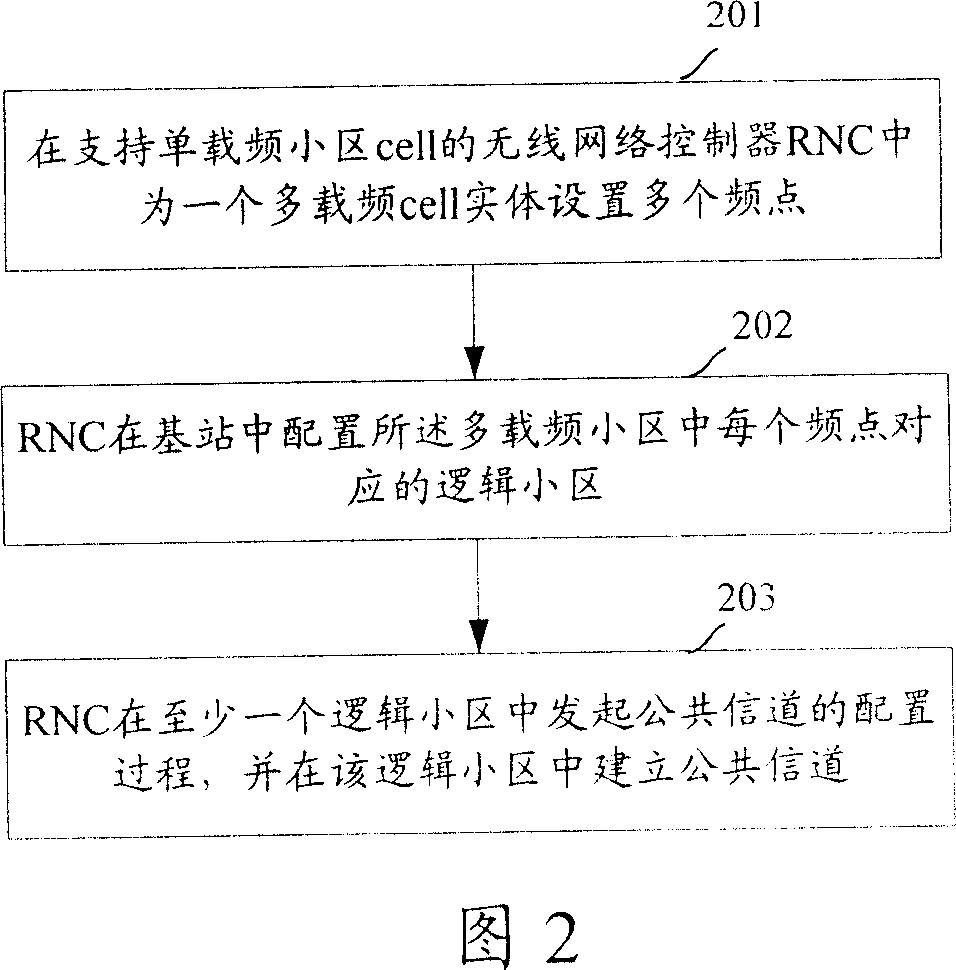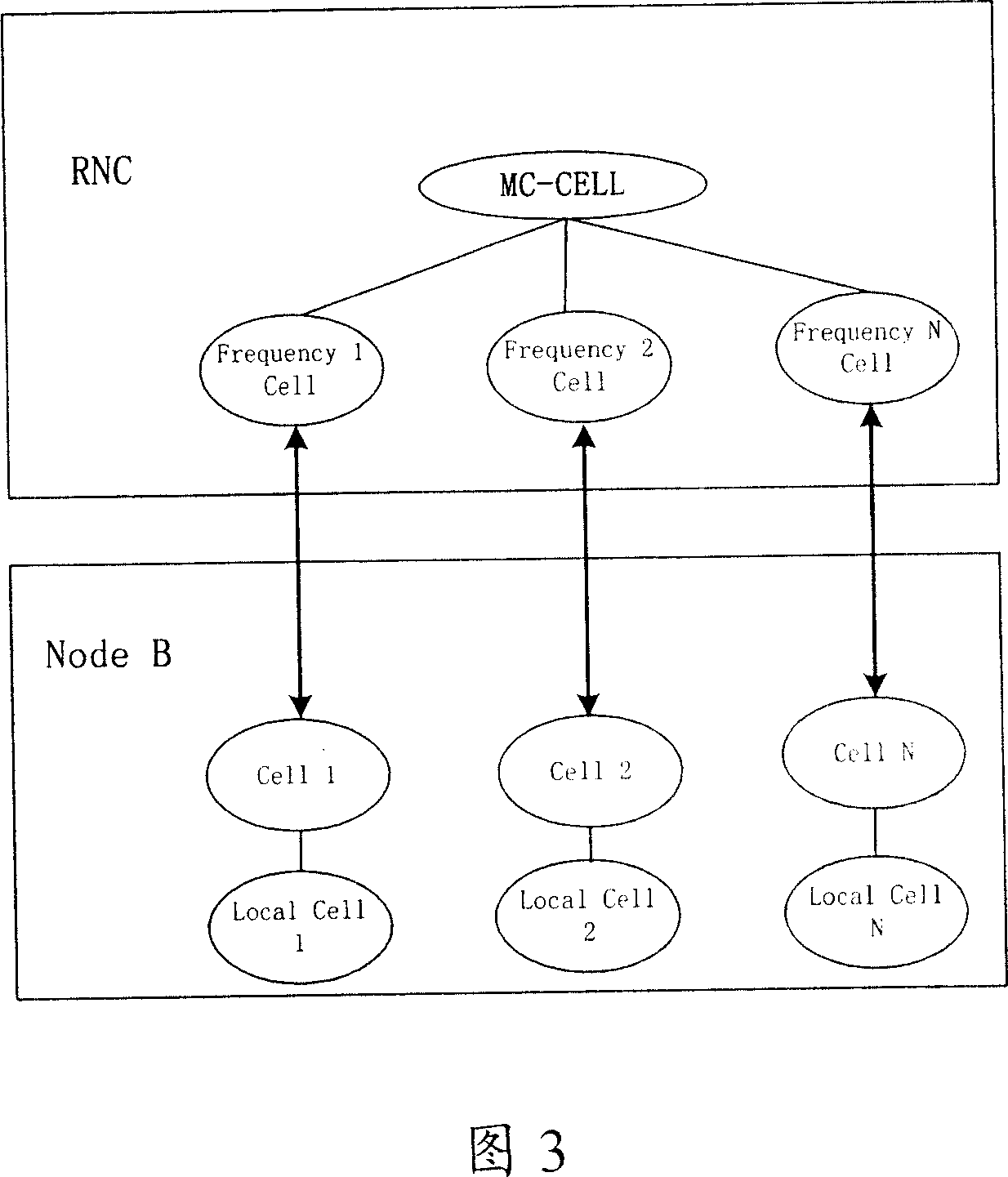Method for updating single-carrier frequency domain to multi-carrier frequency domain
A multi-carrier frequency and single-carrier frequency technology is applied in network planning, electrical components, radio/inductive link selection and arrangement, etc. It can solve the problems of increasing NodeB development and maintenance costs, affecting the accuracy of RNC admission control, etc., and achieving benefits The effect of business maintenance and accuracy assurance
- Summary
- Abstract
- Description
- Claims
- Application Information
AI Technical Summary
Problems solved by technology
Method used
Image
Examples
Embodiment Construction
[0034] It should be noted that the reason proposed by the multi-frequency point cell is to make better use of common channel radio resources and reduce the interference of the same-frequency broadcast channel and DwPTS between different regions. On the air interface, the biggest difference between a multi-frequency cell and a single-frequency cell is in the RRC layer protocol, but on the air interface physical layer, there is basically no change, and the physical layer only performs corresponding operations according to the RRC configuration. On the RAN side, in multi-carrier and single-carrier cells, the only difference in physical layer processing lies in whether pilots and common channels are configured at a certain frequency point, and the frequency point of public measurement is different.
[0035] Therefore, the concept of a multi-frequency cell can be limited to the scope of the RNC, and the Node B, as a transceiver, does not care whether multiple common control resource...
PUM
 Login to View More
Login to View More Abstract
Description
Claims
Application Information
 Login to View More
Login to View More - R&D
- Intellectual Property
- Life Sciences
- Materials
- Tech Scout
- Unparalleled Data Quality
- Higher Quality Content
- 60% Fewer Hallucinations
Browse by: Latest US Patents, China's latest patents, Technical Efficacy Thesaurus, Application Domain, Technology Topic, Popular Technical Reports.
© 2025 PatSnap. All rights reserved.Legal|Privacy policy|Modern Slavery Act Transparency Statement|Sitemap|About US| Contact US: help@patsnap.com



